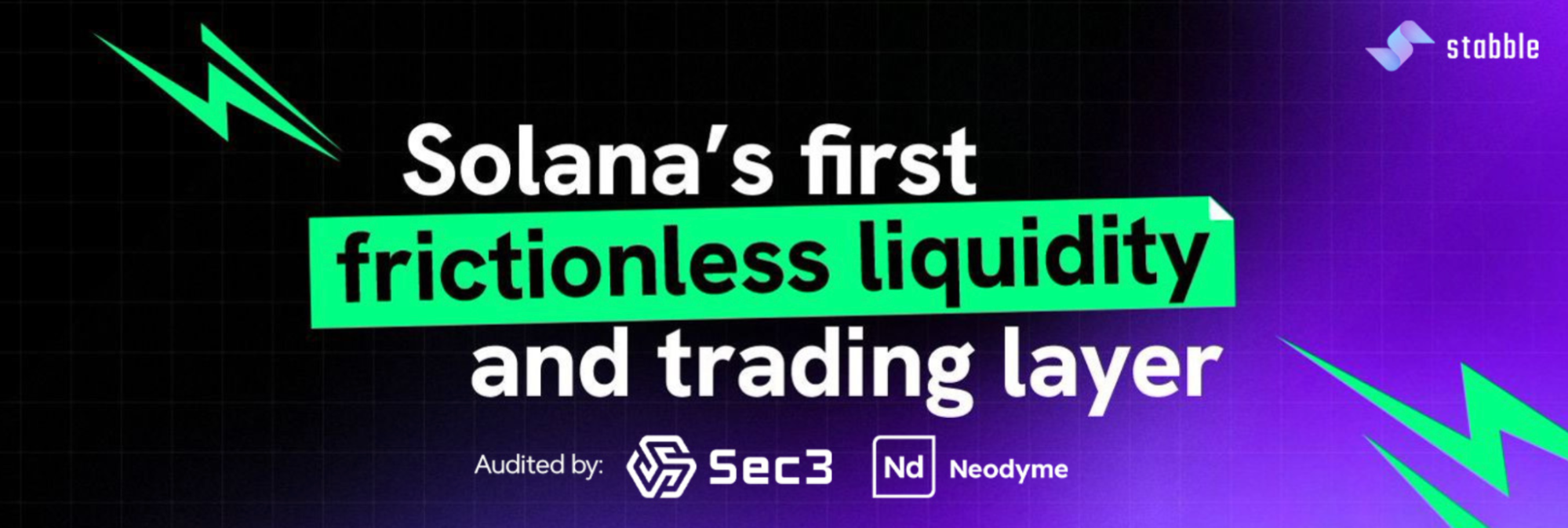Stabble: The Solana-Based DEX Revolutionizing Capital Efficiency and Smart Liquidity
Consensus Opportunities and Traditional DEX Dilemmas

In the past, DEX platforms faced challenges such as low capital utilization, LPs bearing impermanent loss, complex operations, and vulnerability to MEV/bot attacks, which hindered user experience and capital efficiency, making it difficult to drive large-scale adoption of DeFi. Only a small portion of funds was actively in operation, and a large amount of idle assets resulted in low APY, leaving liquidity providers unable to participate in arbitrage and struggling to avoid risks.
The innovative design architecture of Stabble
Stabble has completely redesigned the DEX process, using a protocol-driven liquidity scheduling mechanism and an automatic arbitrage system, which not only maximizes LP yields and reduces the burden of manual rebalancing but also avoids exploitation by external arbitrageurs. An internal arbitrage pool and virtual leveraged liquidity are established to allow investors with different risk preferences to find the best solutions. The protocol automatically refreshes the liquidity pool configuration, employing Smart Liquidity Routing (SLR) to automatically inject a single asset into the optimal pool, enabling ordinary users to easily participate in high-efficiency liquidity mining without fear of competing with professional players.
Dual improvement of capital efficiency and risk management
Stabble’s new AMM architecture ensures sufficient trading depth with less capital, with capital efficiency and APY far exceeding similar products. All arbitrage profits are returned to LPs, avoiding the unfairness brought by external institutions harvesting for a long time. The protocol design deeply integrates virtual leveraged liquidity, opens up cross-exchange and internal arbitrage, creating a robust and diverse DeFi participation space.
STB Token Economics
STB, as an ecological protocol token, has a total supply of 500 million pieces. Its design takes into account launch incentives, market promotion, reserved reserves, team building, and protocol governance:
- Token distribution covers investment funds, teams, KOLs, airdrops, liquidity pools, and long-term reserves of the protocol. The unlocking mechanism is rigorous, avoiding excessive early circulation and ensuring market stability.
- STB serves as the core of the protocol, encompassing multiple functions such as governance voting, internal arbitrage profit sharing, staking, and liquidity incentives.
- Staking STB can yield additional protocol rewards. Protocol parameters, arbitrage settings, and other matters must be decided collectively by token holders to ensure a strong alignment between users and the project.
Conclusion: Stabble’s ecological ambitions
Stabble is not just copying a new AMM on Solana, but rather reshaping the decentralized trading experience in terms of capital efficiency, fair participation, and security mechanisms. It allows every participant to become a beneficiary of the protocol’s long-term growth, helping to bring the DeFi world into a truly scalable and user-driven era. For users tired of the pain points of traditional DEXs, Stabble represents a pathway to a new generation of efficiency and fairness in the gaming field.